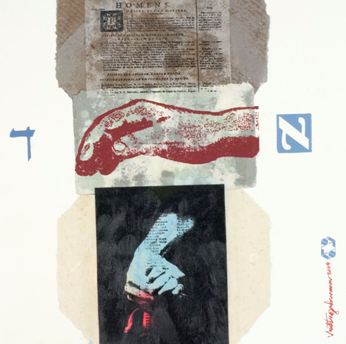The novel Ver: Amor and the trauma's lists
DOI:
https://doi.org/10.17851/1982-3053.9.16.39-46Keywords:
Literature, Shoah, MemoryAbstract
The current article is an analysis of the novel Ver: Amo rby David Grossman, trying to highlight some references to encyclopedias, lists, collections and entries; mentioning the catastrophe that happened in the Second World War. It is said that Ver: Amor is an encyclopedic novel and the reflection made by the author refers to the experiences of reality. There is a tentative of explaining what was Shoah by its writing. Thus, the essay seeks for interpreting this tentative and what it is supposed to represent based on a variety of theories. Considering this novel, it is intended to research the clues that were given by the author trying to review and reflect about the World before, during, and mainly after the horrible scenery left by the Shoah
Downloads
References
BELLEI, Sérgio Luiz Prado. Hipertexto e literatura. Porto Alegre: EDIPUCRS, 2012. p. 75-93.
CALVINO, Italo. Seis propostas para o próximo milênio. Trad. Ivo Barroso. Companhia das Letras, 1990.
CARVALHO, Isaías Jr. Mito, razão e encantamento na obra de Bruno Schulz. In: LEWIN, Helena (Coord.). Judaísmo e globalização: espaços e temporalidades. Rio de Janeiro: 7Letras, 2010. p. 211-218.
GAGNEBIN, Janne Marie. O rastro e a cicatriz: metáforas da memória. ProPosições / Universidade Estadual de Campinas. Faculdade de Educação: Campinas, v. 13, n. 3, p. 125-133, set./dez. 2002.
GROSSMAN, David. Ver: Amor. Trad. Nancy Rozenchan. São Paulo: Companhia das Letras, 2007.
MACIEL, Maria Esther. Do inclassificável e das classificações. In: ______. As ironias da ordem: coleções, inventários e enciclopédias ficcionais. Belo Horizonte: Editora UFMG, 2009. p. 14-30.
NASCIMENTO, Lyslei. Museu e Shoá: dever e memória. In: NASCIMENTO, Lyslei e JEHA, Julio (Org.). Estudos judaicos: Shoá, o mal e o crime. São Paulo: Humanitas, 2012. p. 165-190.
NASCIMENTO, Lyslei. Ver: Shoá – o romance e a enciclopédia em David Grossman. In: LEWIN, Helena (Coord.). Judaísmo e globalização: espaços e temporalidades. Rio de Janeiro: 7Letras, 2010. p. 205-210.
NICHANIA, Marc. A morte da testemunha. Para uma poética do “resto”. In: GINZBURG, Jaime, HARDMAN, Francisco Foot, SELIGMANN-SILVA, Márcio (Org.). Escritas da violência. Rio de Janeiro. 7 Letras, 2012. p. 13-49.
ROZENCHAN, Nancy. A Shoá na literatura israelense: Romance de família, de Edna Mazya. In: NASCIMENTO, Lyslei e JEHA, Julio (Org.). Estudos judaicos: Shoá, o mal e o crime. São Paulo: Humanitas, 2012. p. 196-205.
SELIGMAN-SILVA, Márcio. Política memória e testemunho: gênero, violência e os limites da representação. In: OLINTO, Heidrun Krieger e SCHOLLHAMMER, Karl Erik (Org.). Literatura e crítica. Rio de Janeiro: 7 Letras, 2009. p. 85-123.
WALDMAN, Berta. A memória vicária em Ver: Amor, de David Grossman. In: WALDMAN, Berta, KIRSCHBAUM, Saul (Org.). Ensaios sobre a literatura israelense contemporânea. São Paulo: Humanitas, 2011. p. 187-202.
Downloads
Published
How to Cite
Issue
Section
License
Os direitos autorais pertencem exclusivamente aos autores. Os direitos de licenciamento utilizados pelo periódico é a licença Creative Commons Attribution 4.0 (CC BY 4.0): são permitidos o compartilhamento (cópia e distribuição do material em qualquer meio ou formato) e adaptação (remix, transformação e criação de material a partir do conteúdo assim licenciado para quaisquer fins, inclusive comerciais.






